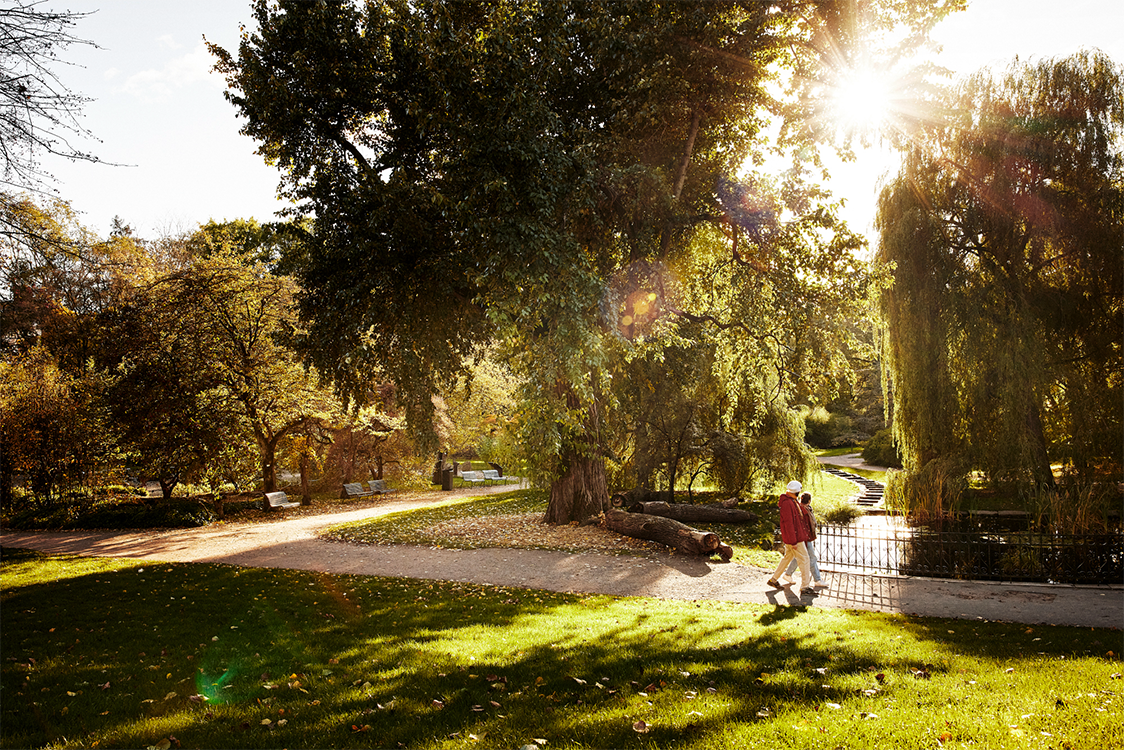The Botanical Garden has a botanical purpose and is not a regular park. This means that the consideration for the plants, botany, and nature outweighs everything else.

The trees in the Botanical Garden are large, beautiful, and unpredictable. They are part of the garden's scientific collections, and they are allowed to go through all stages of life, including aging and decomposition. The goal is to let nature take its course as much as possible in this constructed environment. In some cases, maintenance measures may be necessary, but we aim to showcase plants at all stages of life in nature's cycle. This allows the public to experience large trees through different phases, and the different stages form the basis for a richer biological diversity in the Botanical Garden.
There are many species of insects, fungi, lichens, and mosses that live on older and dying trees, and in many cases, only there. These organisms belong to fields that are also subject to research at the Natural History Museum.

Responsible behavior in the garden
Visitors and staff in the Botanical Garden must be extra vigilant when moving around and working in the garden, especially in areas where the largest trees grow.
Just like in nature and forests, we can never predict when the next branch or tree will fall, even though the trees are monitored. It can happen on sunny days (sudden summer drop) or in connection with heavy snow, rain, and strong winds. Combinations of weather phenomena can also have unpredictable effects, such as water-saturated ground for an extended period combined with wind and heavy rain on leafy tree crowns.
Precautions in the Botanical Garden:
- Pay attention to signs at the entrances that indicate special precautions visitors must take.
- Use the picnic lawn if you want to sit on the grass in the garden.
- Stay alert when moving under the large tree crowns so that you notice changes in the surroundings.
- Never seek shelter under trees when it is raining and windy. Leave the Botanical Garden if there is heavy wind and rain.
- In the event of extreme weather conditions, the Botanical Garden or parts of it may be closed to prevent dangerous situations. The garden will reopen as soon as weather forecasts and inspections indicate that it is safe.